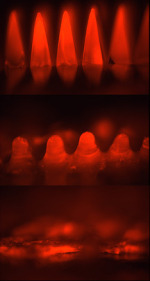Battery
I. Introduction (brief 3-5 sentences)
From laptop computers to remotes to handheld gaming systems batteries affect my life daily. Batteries may have been in use for around 2000 years. Alessandro Volta invented the basis for the modern battery, the voltaic pile, in Italy during the year 1800. If we didn’t have this discovery we would not have some of the luxuries we take for granted today.
Introduce the discovery, setting/time period, and investigator.
II. Discovery
The earliest objects thought to be a battery were the “Baghdad batteries” (sometimes called “Parthian batteries”) of the Sassanid period in Mesopotamia. These objects thought to be batteries are terracotta pots with an iron rod covered in copper. When a liquid electrolyte is added, the result is a weak electric charge. However, these 2000 year old artifacts function are still a mystery since it can’t be proven that they added the liquid electrolyte.
Luigi Galvani was a friend of Alessandro Volta. In 1780 Galvani stumbled upon a discovery of “frankenstien-ic” proportions. He got a dead frog with a brass hook in its mouth to twitch its leg by touching it with an iron scalpel. He made the mistake of believing the energy to come from the animal itself. Volta disagreed with his hypothesis. After twenty years of experimentation Volta disproved the idea that the electricity came from the animal and instead from the reaction of the two metals and an electrolyte in the middle.
III. Biography of Investigator
Alessandro Giuseppe Antonio Anastasio Volta was an accomplished inventor born on
February 18, 1745 in Como, Lombardy, Italy. Volta invented the electrophorus (1775), a device capable of producing a static electric charge. he discovered the gas methane (1777). He was a professor of physics at the University of Pavia. The Emperor of Austria named him a professor of philosophy at padova (1815). He invented the voltaic battery (1800). He got made a count by Napoleon (1810) and had the electrical unit, the volt, named after him. He died on March 5, 1827 near Como, Lombardy, Italy.
III. Impact on the World/Humanity\
We use batteries every day, we use them to start our cars and
to listen to our iPods. The production of batteries was greatly increased during the First
World War as a means of powering torches, field radios. Other milestones in battery
production include the widespread radio broadcasting, which brought battery-operated
wireless into the heart of many homes. But, it was during the inter-war years that battery
performance was greatly enhanced. This was achieved through better selection of materials
and methods of manufacture.
Batteries have now become an essential part of everyday life. They are the power source
for millions of consumer, business, medical, military and industrial appliances worldwide.
This demand is growing.
IV. Journal Article Review
Neuroscientists at the University of New Mexico asked volunteers to play a video game called “DARWARS Ambush!”, developed to help train troops in combat. Half of the players received 2 milliamps of electricity to the scalp, powered by a simple 9-volt battery, and they played twice as well as those without. The DARPA-funded study suggests direct current applied to the brain could improve learning.









